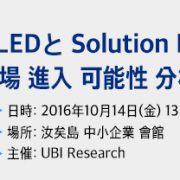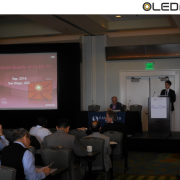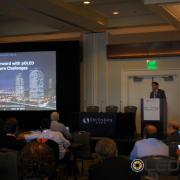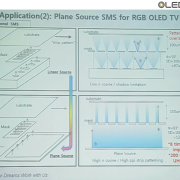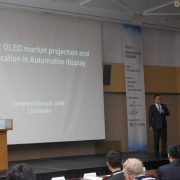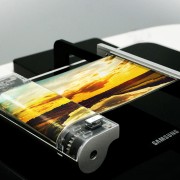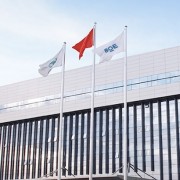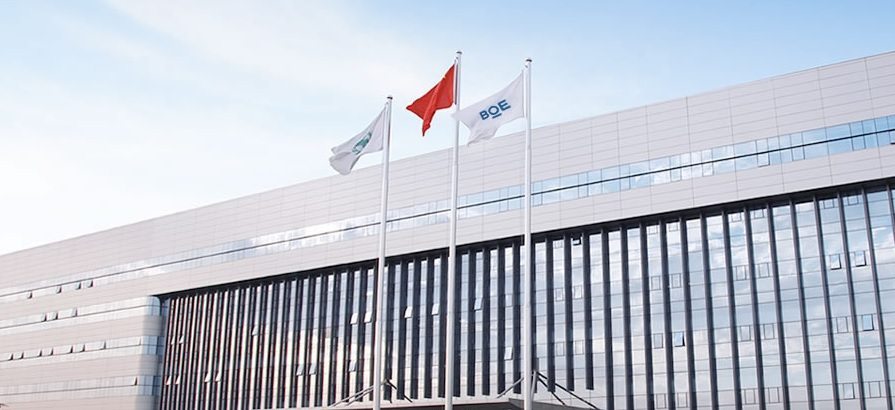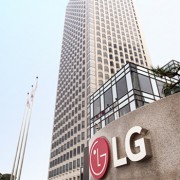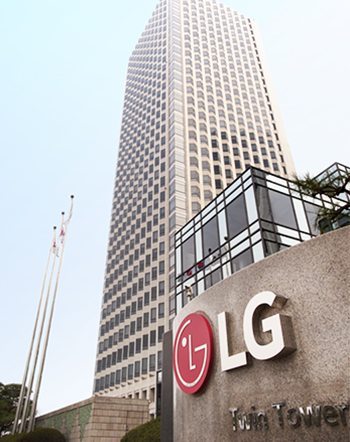LGディスプレーOLED TV、専門家画質評価書 ‘全分野で最高’
LGディスプレー(代表取締役社長、韓相範/www.lgdisplay。com)のOLED TVが米ディスプレー専門家グループのディスプレーメート(DisplayMate)から最高画質と絶賛を受けた。
4日(米東部時間基準)、ディスプレーメートは自社のホームページに’最新LG OLED TV画質評価(2016 LG OLED TV Display Technology Shoot-Out)’というタイトルのポスティングを通じてUHD解像度の65インチOLED TVと最新のLCD TV画質比較評価結果を公開した。
ディスプレーメートの比較評価は現在市販されているUHD解像度の65インチOLED TV(モデル名:65E6)と最新のLCD TVを対象に『ブラック表現』、『HDRの実現』、『視野角』、『色/輝度の精度』、『応答速度』及び『反射率』など画質評価の全ての部分にわたって行われた。
まず『ブラック表現』評価でディスプレーメートはOLED TVはLCD TVとは異なってピクセルの一つ一つを制御するため、光漏れの現象がなく完璧なブラックを表現できたと分析した。
特に、『HDR(High Dynamic Range)実現』項目でディスプレーメートは最新LCD TVが光源(Backlight)の部分制御(Local Dimming)技術を適用したにもかかわらず、隣接した光源から出る光のせいでブラックと白を同時に満足させることができない限界を持つ反面、OLED TVは高(High)を超えて、極限(Infinite)レベルのHDRを実現できると絶賛した。
視野角の評価でディスプレーメートはLCD TVがサイドからの視聴時の色再現率の低下、色変化(Color Shift)やコントラスト比減少現象が起きている反面、OLED TVはサイドからから見ても、色と明暗の変化が全く発生しないと分析した。
色と輝度の正確度の面でもOLED TVは国際電気通信連合(ITU、International Telecommunication Union)が定めたHDTV基準(BT.709)とデジタル・シネマ標準(DCI、Digital Cinema Initiatives)と分析した際、入力データと出力映像でみられる色誤差がほとんどなく、最新のLCD TVに比べて確実な比較優位があると分析した。
応答速度の場合、ダイナミックな動画(秒当たり2,544ピクセル移動)を1/320秒で撮影したイメージで最新のLCD TVでは重なり画面(Ghost Image)が現れた反面、OLED TVは残影(Blur)が全くない完璧な映像を見せたと分析した。
さらに、反射率(Reflection)の評価でも、ディスプレーメートはOLED TVが外部の照明に対する反射率が1.1%に過ぎず、照明や太陽光の影響が大きい家庭環境でも光反射がなく鮮明な画質を実現できると分析した。 これは反射率が2.2%であるLCD TVに比べて2倍程度優秀な結果だ。
ディスプレーメートの評価結果でLGディプルレイのOLED TVは①自発光で完璧なブラックを実現、②HDRの実現に最適のTVであり、③どの角度でも色の退色がない同一のカラーを表現、④正確な色の表現と歪曲のない完璧な画質を誇り、⑤迅速な応答速度に引っ張られない鮮明な画面を見せて⑥反射率が低くて、家庭TV環境に最適であるという側面から、LCDを超えたレベルが違う技術であることを改めて立証された。
ディスプレーメートのレイモンド・ソネイラ(Raymond M.Soneira)博士はテストの総評で、『LGディスプレーのOLEDパネルを採択したUHD解像度の65インチOLED TVは画質面で完璧に近い((In terms of picture quality、the LG OLED TV is visually indistinguishable from perfect))、
『LG OLED TVは今までテストしたTVの中で最高の性能ということに疑いの余地がない(It is unquestionably the best performing TV that we have ever tested or watched)』と絶賛した。
一方、ディスプレーメートは米ディスプレー専門家集団が運営するディスプレー専門メディアで、テック関連記事引用回数が全世界のメディアのうち60位のUSA Todayに続いて61番目に多いほど、その影響力が高まって、今回の評価を進めたソネイラ博士は米プリンストン大学で理論物理学を専攻しており、AT&Tベル(Bell)研究所とCBS放送局などを経たディスプレー専門家で現在ディスプレーメイト代表を務めている。


写真出典 : LG Display


